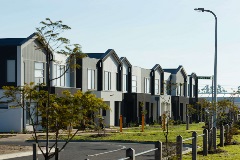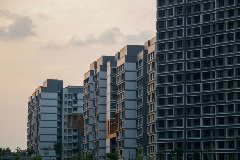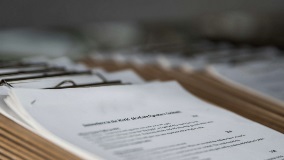
You just leased space to carry on a fast-food restaurant in a university neighbourhood where the target market is students who don’t carry cash. You don’t want to pay debit card transaction costs and you also want to help ease the students’ ‘cash crunch’ so you install an ATM machine for money withdrawal by debit card. Your landlord claims you are changing your use by doing so and brings an application for removal of the ATM. Have you changed your use?
That was the scenario in 2249778 Ontario Inc v Smith (Fratburger) 2014 ONCA 788 (CanLII) a 2014 decision of the Ontario Court of Appeal.
The Facts:
The Tenant leased premises from the Landlord to operate a fast-food restaurant. The Lease stated the Tenant would use the Premises only for the purpose of:
“A fast food restaurant primarily selling hamburgers, hot dogs, chicken sandwiches, french fries, poutine and individual servings of soft drinks, coffee and tea and as ancillary thereto, the Tenant may use a minor portion of the Premises for offices as reasonably required for the Tenant’s business from the Premises and for no other purpose. The Tenant shall be permitted, at its sole expense, to apply for and obtain a licence to serve alcoholic beverages with this use as a fast-food restaurant.”
The Lease also contained terms whereby the tenant covenanted to:
(a) operate its business with due diligence and efficiency and maintain an adequate staff to properly serve all customers; own, install and keep in good order and condition free from liens or rights of third parties, fixtures and equipment of first class quality; and carry at all times such stock of goods and merchandise of such size, character and quality as will produce the maximum volume of sales from the Premises consistent with good business practices;
(d) stock in the Premises only merchandise the Tenant intends to offer for retail sale from the Premises, and not use any portion of the Premises for office, clerical or other non-selling purposes except minor parts reasonably required for the Tenant’s business in the Premises.
After the Lease was executed, the Tenant immediately installed and operated an ATM. One year later the Landlord said its consent was needed and not obtained to the new use.
The Tenant claimed debit card use cost him about 50 cents per transaction, which he had to absorb or charge to his student customers. Furthermore, customers often try to use debit machines like ATMs and ask for cash back with purchases. The Tenant said these requests result in limited cash on hand for his business. So, the Tenant claimed an ATM was convenient for his customers and was simply an economical way to make his business more effective and customer friendly.
The Landlord brought an application for a declaration that the Lease did not permit an ATM on the Premises and an order requiring the Tenant to remove it.
The Landlord claimed the use was clear and certain on its wording and that its future planning and ability to provide exclusivity to other potential tenants of the mall should not be negatively affected by a use not contemplated by the Lease with the Tenant.
The Decision:
The ATM was permitted to remain and the Landlord’s application was dismissed as there was no change in use.
The Reasons:
At trial the judge found:
- ATM fell within the definition of permitted use because it was a tool used to achieve the business objectives of running the fast-food restaurant: “the installation of the ATM does not in any way change the purpose of the premises, which is a fast food restaurant.”
- The use of the ATM was for appropriate business reasons, namely, to assist the Tenant in “keeping his costs low and his clients happy”.
- The installation of an ATM that dispensed cash did not constitute a “purpose” for which the Tenant was using the Premises. The Tenant was not offering banking services and the ATM did not change the purpose of the Premises from a fast-food restaurant.
On appeal the Court affirmed that decision and found as follows:
- There was no error of law or mixed fact and law that would justify the appeal court to intervene.
- “The lease did not define fast-food restaurant; was silent on other equipment and business tools such as a cash register and a debit terminal that are critical to a fast-food restaurant and implicitly included in the permitted use of the premises; and nothing in the lease prohibited the installation and operation of an ATM”;
- Nothing in the Lease prohibited the installation and operation of an ATM. It was open to the parties to a commercial contract to include terms regarding the placement of an ATM as a prohibited activity.
The Lessons:
- The Permitted Use is one of the critical non-rent areas of the Lease to address as business can evolve over time (e.g. Tim Hortons) and broader uses provide greater flexibility to tenants as well as allowing more flexibility and a wider range of transferees on the sale of a business and lease transfer;
- A Landlord needs to have a long-term vision of its property and potential users so as not to inadvertently limit its ability to grant exclusive uses to major tenants;
- Remember the rule of “contra proferentum” (ambiguities in a document will be construed against the drafter).
Disclaimer: This article is for general information purposes only and not intended as or to be relied upon for legal advice. Consult with a lawyer for your unique situation.
[*If there is a general real estate or leasing related question you would like to see addressed in a future article in “The Legal Corner”, please contact me directly by e-mail at dgold@robapp.com with your suggestion. Not all requests can be accommodated.]
As published in Property Biz Canada on March 11, 2015






